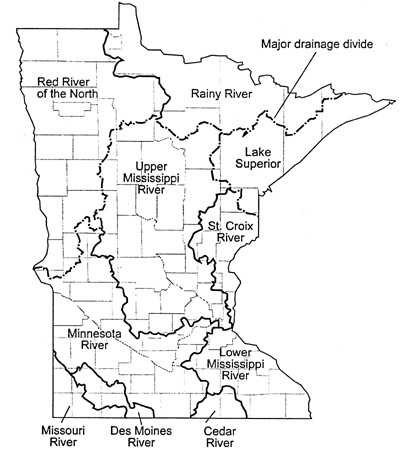 |
 |
AN OVERVIEW OF MINNESOTA’S RIVERS
INTRODUCTION
Minnesota contains eight major river basins with 92,000 miles of river. Eighty-one major watersheds compose these eight river drainage basins: Red River, Rainy River, Lake Superior, Upper Mississippi, Lower Mississippi, St. Croix, Minnesota, and Missouri (Figure 2.1).1 A continental divide in Northeastern Minnesota partitions the surface flows from these eight river drainage basins into three major flow ways that constitute headwaters areas for the Hudson Bay, the Atlantic Ocean and the Gulf of Mexico.

Figure 2.1 Major Watersheds in Minnesota. Rivers Council of Minnesota, 1999.
footnote #1.
As described in Chapter 1, a watershed is the land area that contributes
surface flow to a single river system. Watersheds are nested such that
the watershed of a large river is composed of several smaller tributary
river basins, each of which is composed of several stream basins.